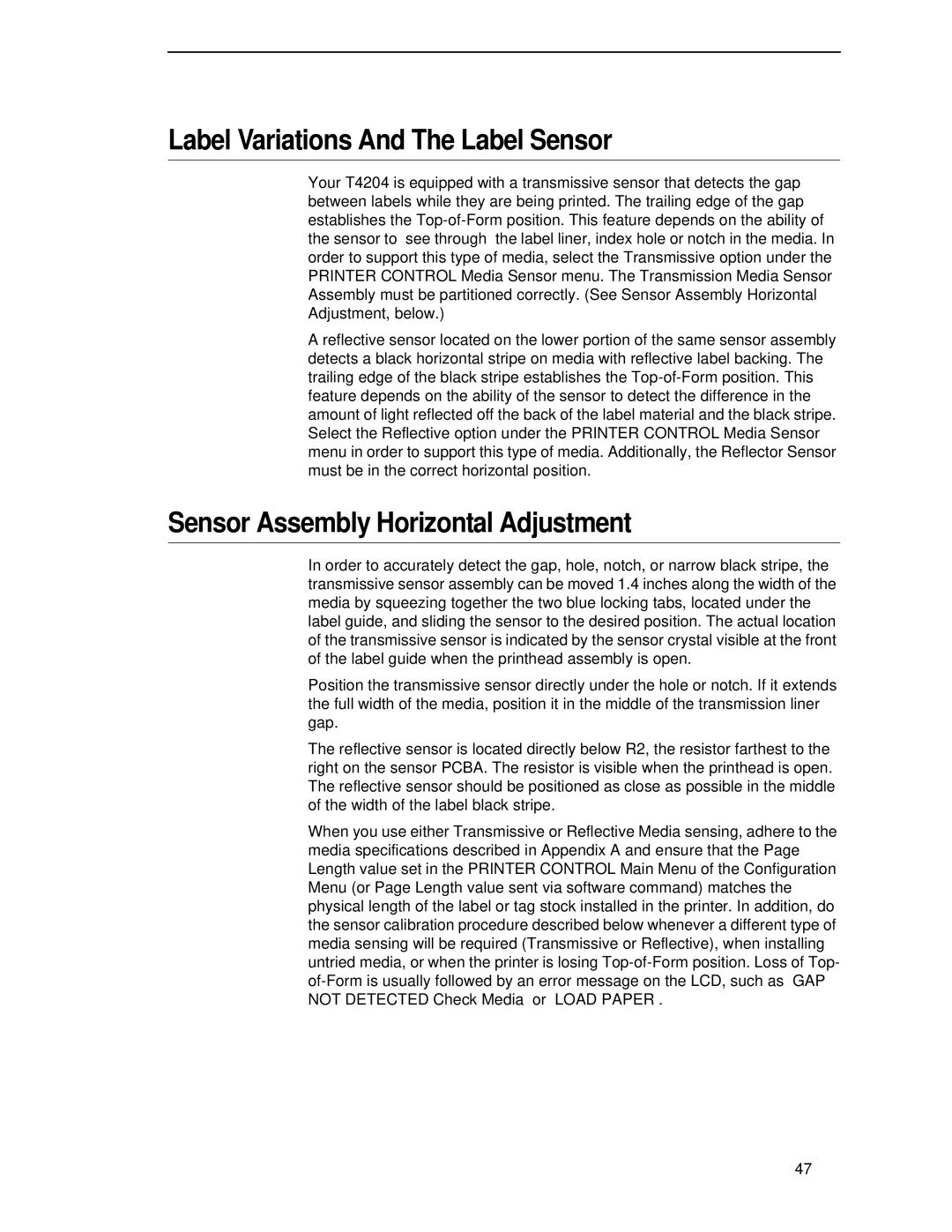
Label Variations And The Label Sensor
Your T4204 is equipped with a transmissive sensor that detects the gap between labels while they are being printed. The trailing edge of the gap establishes the
A reflective sensor located on the lower portion of the same sensor assembly detects a black horizontal stripe on media with reflective label backing. The trailing edge of the black stripe establishes the
Sensor Assembly Horizontal Adjustment
In order to accurately detect the gap, hole, notch, or narrow black stripe, the transmissive sensor assembly can be moved 1.4 inches along the width of the media by squeezing together the two blue locking tabs, located under the label guide, and sliding the sensor to the desired position. The actual location of the transmissive sensor is indicated by the sensor crystal visible at the front of the label guide when the printhead assembly is open.
Position the transmissive sensor directly under the hole or notch. If it extends the full width of the media, position it in the middle of the transmission liner gap.
The reflective sensor is located directly below R2, the resistor farthest to the right on the sensor PCBA. The resistor is visible when the printhead is open. The reflective sensor should be positioned as close as possible in the middle of the width of the label black stripe.
When you use either Transmissive or Reflective Media sensing, adhere to the media specifications described in Appendix A and ensure that the Page Length value set in the PRINTER CONTROL Main Menu of the Configuration Menu (or Page Length value sent via software command) matches the physical length of the label or tag stock installed in the printer. In addition, do the sensor calibration procedure described below whenever a different type of media sensing will be required (Transmissive or Reflective), when installing untried media, or when the printer is losing
47
